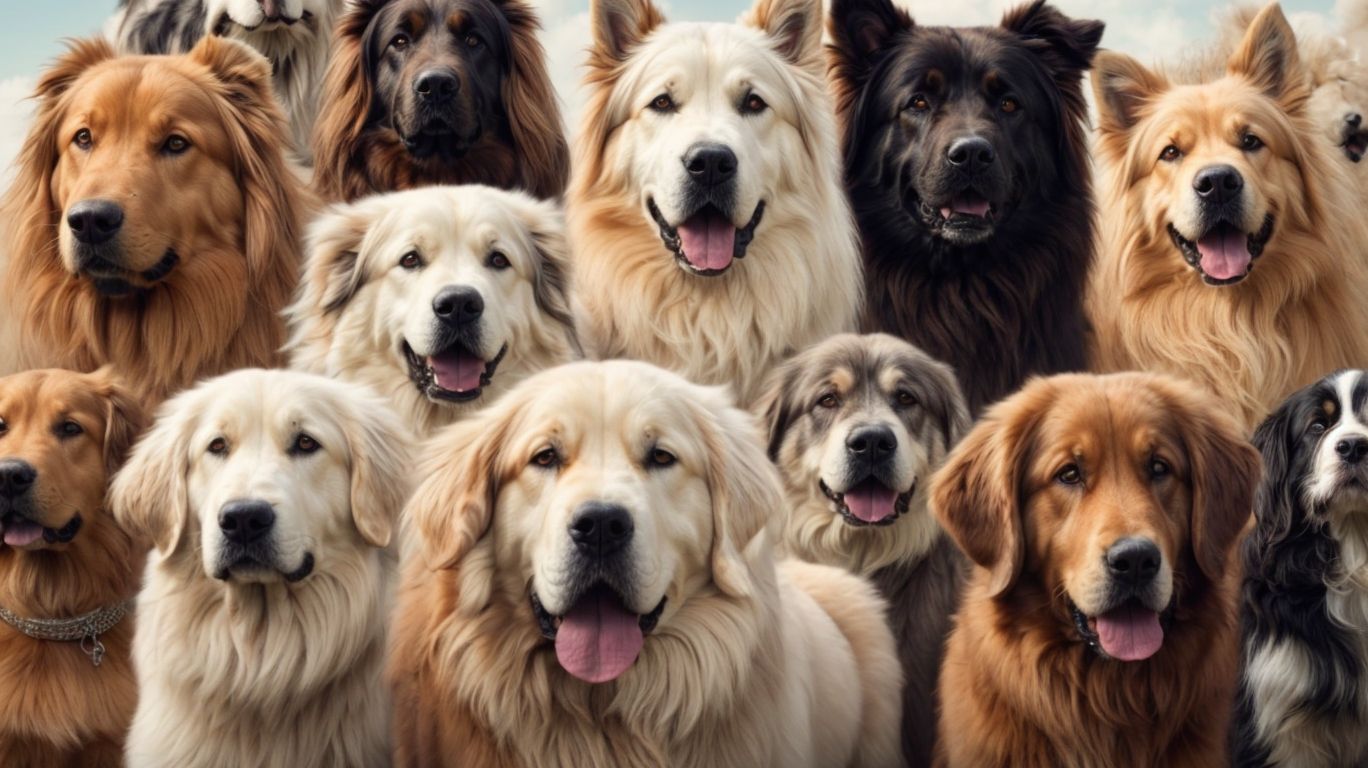
Post-Spaying Physical Changes in Dogs: Nipples and Incisions
Dog spaying is a common surgical procedure that many pet owners opt for to prevent unwanted pregnancies and improve their dog’s overall health. It’s essential to understand what happens during this surgery and what to expect afterward. In this comprehensive guide, we will delve into the steps of dog spaying surgery, the importance of monitoring your dog post-surgery, potential complications to watch out for, and the physical changes you can expect to see.
We’ll provide valuable insights on how to care for your dog after spaying and when you can anticipate the physical changes to resolve. Whether you’re considering spaying your dog or have recently gone through the process, this article aims to equip you with the knowledge and guidance to ensure your dog’s well-being throughout the spaying journey.
What Happens During Dog Spaying?
Dog spaying, also known as ovariohysterectomy, is a surgical procedure commonly performed on female dogs to remove the reproductive organs, thereby preventing them from going into heat and reproducing.
This procedure not only helps in controlling the pet population, but it also offers various health benefits for the dog. By spaying female dogs, the risk of uterine infections, mammary tumors, and certain reproductive cancers is significantly reduced. The surgical process involves the removal of the ovaries and uterus under general anesthesia.
After the procedure, the dog needs proper post-operative care to facilitate a smooth recovery. It is crucial for pet owners to follow the veterinarian’s instructions, including monitoring the incision site, administering medications, and preventing excessive activity during the healing process.
What Are The Steps Of Dog Spaying Surgery?
The dog spaying surgery involves several key steps, including anesthesia administration, making the incision, identifying and ligating the blood vessels, and removing the ovaries and uterus.
Once the dog is under general anesthesia, the surgeon will carefully make an incision in the abdominal wall. This is followed by the identification and ligation of the blood vessels that supply blood to the ovaries and uterus. After securing the blood supply, the surgeon will carefully remove the ovaries and uterus.
Post-operatively, the dog will require monitoring for any signs of complications, pain management, and restricted activity to aid in the healing process.
Why Is It Important To Monitor Your Dog After Spaying?
Monitoring your dog after spaying is crucial to ensure proper recovery, identify any post-operative complications, and provide necessary veterinary care to support the healing process.
Animal welfare experts recommend vigilant observation during the post-operative period to monitor for signs of excessive pain, inflammation, or abnormal discharge, which could indicate complications such as infection or internal bleeding. Regularly checking the incision site for any redness, swelling, or discharge is essential for tracking the progress of wound healing.
Post-spaying, dogs may experience mild changes in behavior or appetite, and by closely monitoring these, pet owners can address any concerns promptly and ensure the overall well-being of their beloved companions.”
What Are The Possible Complications After Dog Spaying?
While dog spaying is a common and safe procedure, there are potential complications that may arise, including post-operative infections, adverse reactions to anesthesia, and issues related to the surgical incision.
Post-operative infections can be a concern, requiring diligent post-operative care to ensure the incision site remains clean and free from bacteria. Anesthesia-related concerns, although rare, can pose risks, especially for older dogs or those with pre-existing health conditions.
Incision-related issues such as swelling, redness, or discharge may also occur and should be monitored closely. It’s essential for pet owners to be aware of these potential complications and work closely with their veterinarian to mitigate any risks.
What Physical Changes Can Be Expected After Dog Spaying?
Several physical changes can be expected in female dogs after spaying, including alterations in the mammary glands, changes at the incision site, and potential hormonal shifts affecting the body’s healing and recovery processes.
The nipples may undergo changes, potentially becoming less prominent and decreasing in size. The incision typically heals within a few weeks, but swelling and inflammation may occur initially. It’s essential to monitor for any signs of infection or abnormal scarring.
Spaying can also lead to reduced risk of mammary tumors and prevents future reproductive complications, contributing to the overall health and well-being of the dog.
Changes In The Nipples
After spaying, dog owners may observe changes in the nipples, including swelling, mild inflammation, and potential hormonal adjustments that contribute to the post-surgical alterations in the mammary gland area.
These changes are primarily influenced by the interruption of reproductive hormones post-spaying. As the ovaries are removed during the procedure, the hormonal balance in the body shifts, leading to the expansion of the mammary tissues and associated swelling in the nipples. Some dogs may experience mild inflammation in the nipple area as part of the healing process. It’s important for pet owners to monitor these changes and consult their veterinarian to ensure the dog’s post-surgical recovery is progressing as expected.”
Changes In The Incision Site
The incision site following dog spaying undergoes a healing process, which includes scab formation, gradual closure, and the potential for minimal scarring, reflecting the body’s post-surgical changes and wound recovery.
As the dog’s body initiates the healing process, the incision site may display redness and mild swelling, which are normal inflammatory responses. Over time, the scab will naturally fall off, revealing healed tissue beneath. To aid this process, it’s crucial for pet owners to ensure proper wound care, including keeping the area clean and monitoring for any signs of infection.
Understanding the broader impact of spaying on the dog’s body reinforces the significance of providing a supportive environment for full recovery.
How To Take Care Of Your Dog After Spaying?
Proper post-operative care for dogs after spaying involves:
- Wound monitoring
- Preventing licking or chewing of the incision site
- Managing discomfort
- Ensuring limited physical activity to support the healing process effectively
It’s crucial to check the incision site daily for any signs of infection, such as redness, swelling, or discharge, and to follow any specific instructions provided by the veterinarian. Behavioral changes may occur, so it’s essential to provide a comfortable and quiet environment for the dog to recover. Providing pain management as prescribed by the vet can help alleviate any discomfort. Ensuring that the dog has limited activity, including no running, jumping, or rough play, is also important during the recovery period.”
Keep The Incision Site Clean
Maintaining cleanliness and proper hygiene around the incision site is crucial for post-spaying wound care, as it reduces the risk of infection and supports effective healing for the dog.
This involves keeping the incision area clean and dry, as recommended by veterinarians. Regularly checking for any signs of redness, swelling, or discharge, and following the vet’s instructions for dressing changes and care routine are essential. It’s important to prevent the dog from excessive licking or scratching the incision site, as this could lead to complications. By prioritizing hygiene and following veterinary advice, pet owners can significantly contribute to their dog’s post-surgery recovery and overall well-being.
Prevent Licking And Chewing
Preventing the dog from licking or chewing the incision site is essential post-spaying, as it minimizes the risk of wound disruption, discomfort, and potential complications during the recovery period.
This preventative measure plays a crucial role in ensuring that the surgical area heals properly. Behavioral changes, such as restlessness, excessive grooming, or agitation, may indicate discomfort, and it’s important for pet owners to provide appropriate care and support to help their dog through this phase. By following post-operative care guidelines and keeping the incision site clean and free from interference, owners can significantly contribute to their pet’s overall health and well-being after the spaying procedure.
Monitor For Signs Of Infection
Vigilant monitoring for signs of infection, such as increased redness, swelling, or discharge, is crucial after dog spaying, as prompt veterinary treatment can mitigate potential complications and support the pet’s overall health.
Not only does vigilance contribute to the early detection and management of complications, but it also ensures that the wound is properly cared for during the crucial post-operative period. Close attention to the surgical site, regular check-ups, and adhering to the veterinarian’s instructions for wound care are essential components of post-operative monitoring. This diligent approach to post-spaying care can significantly impact the pet’s recovery and long-term well-being.”
Limit Activity
During the recovery period post-spaying, it is important to limit the dog’s physical activity to minimize discomfort, prevent potential complications, and facilitate the healing and body changes associated with the surgical procedure.
This involves avoiding activities such as vigorous exercise, jumping, and running, as these could strain the surgical site and impede the recovery process. The body needs time to adjust to the hormonal changes resulting from spaying.
It’s essential to monitor the dog’s behavior, as they may experience temporary mood swings or anxiety during this period. Providing a comfortable and quiet environment, along with ample rest, can support their recovery and overall well-being. Taking these precautions can contribute to a smoother and quicker recovery for your pet.
When Can You Expect The Physical Changes To Resolve?
The resolution of physical changes post-spaying varies, with nipples potentially taking up to 6 months to return to normal, while the incision site typically heals within 10-14 days, reflecting the body’s healing and recovery processes following the surgical procedure.
During this time, hormonal adjustments occur, which may lead to alterations in mammary gland development. It’s important to monitor the pet’s health closely, ensuring that any changes are addressed promptly.
Post-spaying, dogs may experience a decrease in the risk of certain health issues, such as mammary tumors and pyometra, contributing to their overall well-being and longevity. Regular veterinary check-ups and a balanced diet can further support your dog’s health through these physical changes post-spaying.
Nipples May Take Up To 6 Months To Return To Normal
After spaying, it is common for the dog’s nipples to undergo changes that may take up to 6 months to return to their normal size and appearance, reflecting the hormonal adjustments and post-surgical variations in the mammary gland area.
During this post-spaying period, the dog’s body experiences significant hormonal fluctuations, which can lead to alterations in the mammary glands, causing the nipples to appear enlarged or swollen. These changes are a natural part of the healing process, and pet owners should expect gradual normalization.
It’s crucial to monitor the nipples for any signs of inflammation or discharge, as this could indicate an infection or other complications. Keeping a close eye on the recovery process helps ensure the pet’s overall health and well-being.
Incision Site Should Heal Within 10-14 Days
The healing of the incision site typically follows a timeline of 10-14 days post-spaying, reflecting the body’s post-surgical changes, wound recovery process, and the overall impact on the pet’s health.
During the first few days after spaying, the incision site may appear swollen and tender, accompanied by a small amount of discharge, which are all part of the body’s natural healing process. As the days progress, the swelling and tenderness should subside, and the incision should gradually close. It’s important to monitor the incision for any signs of infection, such as increased redness, warmth, or pus. The pet may experience changes in behavior or appetite during this time, but these usually resolve as the healing progresses.”
What To Do If The Physical Changes Do Not Resolve?
If the physical changes in your dog do not show signs of resolving within the expected timelines, it is advisable to seek veterinary consultation and consider re-examination or additional treatment to address any potential complications and support the pet’s overall health.
Your veterinarian can provide guidance on the next course of action, which may involve further tests or procedures to diagnose any underlying issues. They can also discuss the potential impact of the unresolved changes on your dog’s well-being and recommend appropriate treatment options. Prompt veterinary care is crucial to ensure that any complications are addressed effectively, and the overall health and comfort of your pet are prioritized.
Remember, early intervention and thorough assessment can significantly impact the outcome for your beloved pet.
Consult A Veterinarian
Seeking professional veterinary advice and consultation is essential if the physical changes in your dog post-spaying do not resolve, as it enables timely assessment, guidance, and potential treatment recommendations to support the pet’s overall health.
These changes could indicate underlying health issues, and a veterinarian can conduct a comprehensive examination to address any concerns. Professional care may involve monitoring the dog’s healing process and providing tailored recommendations for nutrition, exercise, and medication if necessary. It ensures that any complications post-spaying are promptly addressed, leading to a smoother recovery and safeguarding the long-term well-being of your beloved pet.
Consider Re-examination Or Additional Treatment
In cases where the physical changes persist, considering re-examination or additional treatment under veterinary guidance is crucial to address any underlying issues and ensure the well-being of your pet post-spaying.
Veterinarians play a crucial role in post-operative monitoring and addressing any complications that may arise after spaying. Physical changes in pets can indicate potential health concerns, and prompt veterinary care is essential to prevent any further complications.
Post-operative treatments and medications may be necessary to manage any discomfort or medical issues. It’s important to prioritize your pet’s health and seek professional veterinary guidance to ensure they recover fully and maintain their quality of life.”




No Comments